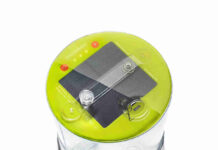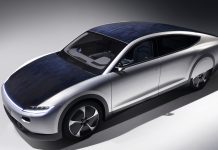
As a child in Mali, Abdrahamane Traoré often did his homework by the sooty, dim light of a kerosene lamp.
As an adult in Michigan, he sometimes has a tough time reaching his family back home. Traoré’s mother must walk to a neighboring village to keep a cell phone charged.
Electricity isn’t always a plug away in much of the developing world. That’s why Traoré and University of Michigan engineering student Md. Shanhoor Amin teamed up to develop the Emerald, a personal solar panel the size of a paperback.
The young engineers are the founders of June Energy, an award-winning start-up spending its second semester in the TechArb student business incubator. The company recently received more than $500,000 in venture capital, and it’s about to ship its first 40 domestic orders. Amin and Traoré, along with chief technical officer Allan Taylor, are planning a trip to Kenya and Mali later this semester to test their prototype with the people it was primarily designed for.
Amin, who will graduate in April with a master’s in energy systems engineering, says the Emerald is unique.
“There are products now that offer either discrete lighting or basic electricity, but not both. And these products are expensive due to high internal component costs,” Amin said. “We’ve developed circuitry that solves both of these problems affordably.”
The company’s goal is to get the price under $20 for its customers in the developing world.
For lighting, the Emerald uses energy-efficient light-emitting diodes, or LEDs. It gives reading light for at least 8 hours.
“Kerosene lamps provide 60 lumens of light, which is really not much,” Amin said. “It strains the eyes. Our product can give up to 100 lumens, which is really ample for reading at night time.”
Other reasons the developers say the Emerald is better than kerosene: The fuel can get expensive, and it isn’t healthy to breathe in the lamps’ smoke. Kerosene is the primary cause of respiratory illness in regions where it is commonly used, Amin said.
“I knew the lamp was harmful to my lungs, but I didn’t have access to anything better,” Traoré said.
For cell phone charging, the Emerald has USB and cell phone ports and will come with a bag of adapters. It can fully charge a smartphone in the same time it would take at an outlet, developers say.
It recharges in full sunlight in three hours.



